“Even though we were discovered on Easter day, we like the original name of Rapa Nui more” answers our half naked guide with his long black hair, sounding a little annoyed.
I was actually more interested in how they celebrate Easter on Easter Island than in the origin of its name. Do they celebrate the Catholic holy day at all and do they have a specific remembering ceremony because of the name? Almost instantly I received an answer to my latter question: it wasn’t only our guide who didn’t care about the name, but neither did the locals, meaning there is no ceremony tied to this. The Catholic Easter mass on the other hand was much more colorful than I had hoped.

Locals, settled foreigners and tourists started gathering in the church in the only town on the island well before the beginning of mass. The building was constructed in 1964 and is worth a visit just for its wonderful wooden carvings. On the amazing facade of the building, next to the stone figure of the blessing Jesus, many local symbols and legends are depicted, like the one of the ancient Birdman. According to an old tradition, the young man who during the yearly organized competition, was first to return with the egg of a sooty tern from the bare cliffs of the nearby island of Motu Nui, was given the distinguished honor of Birdman, and his tribe leader became the leader of the island for a year.
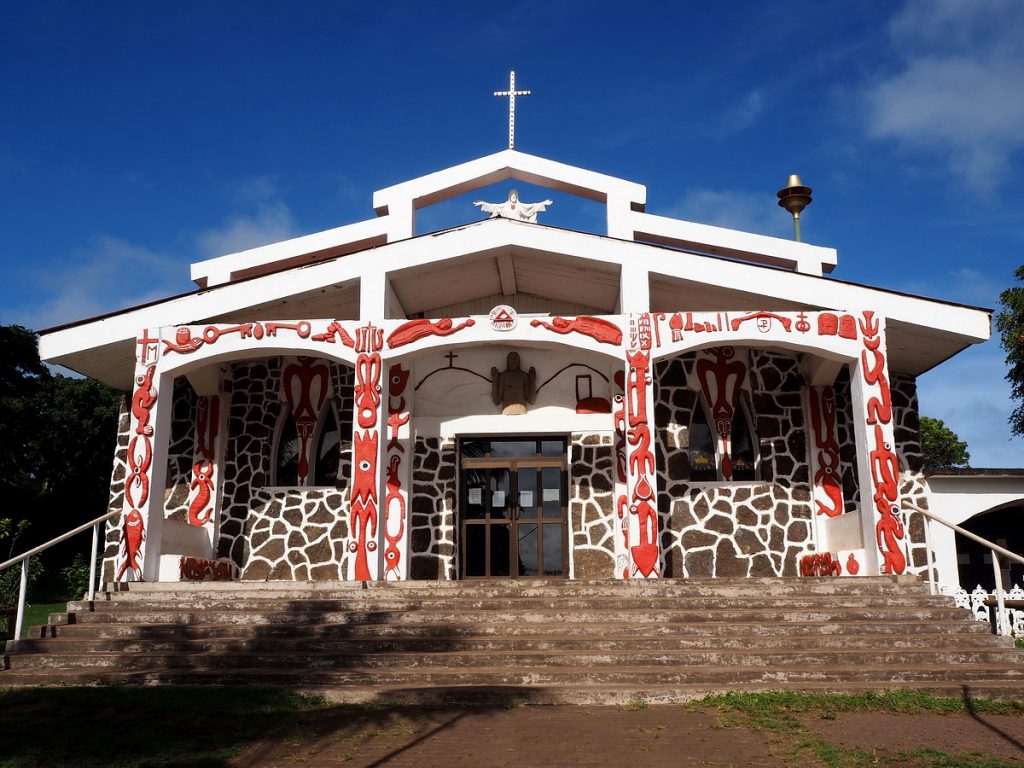
The dress of the priest entering the crowded church was illustrative of what was characteristic of the whole ceremony: a mixture of Catholic liturgy and the traditions of Rapa Nui. The priest’s vestment and orary were complemented by a headpiece made of feathers.
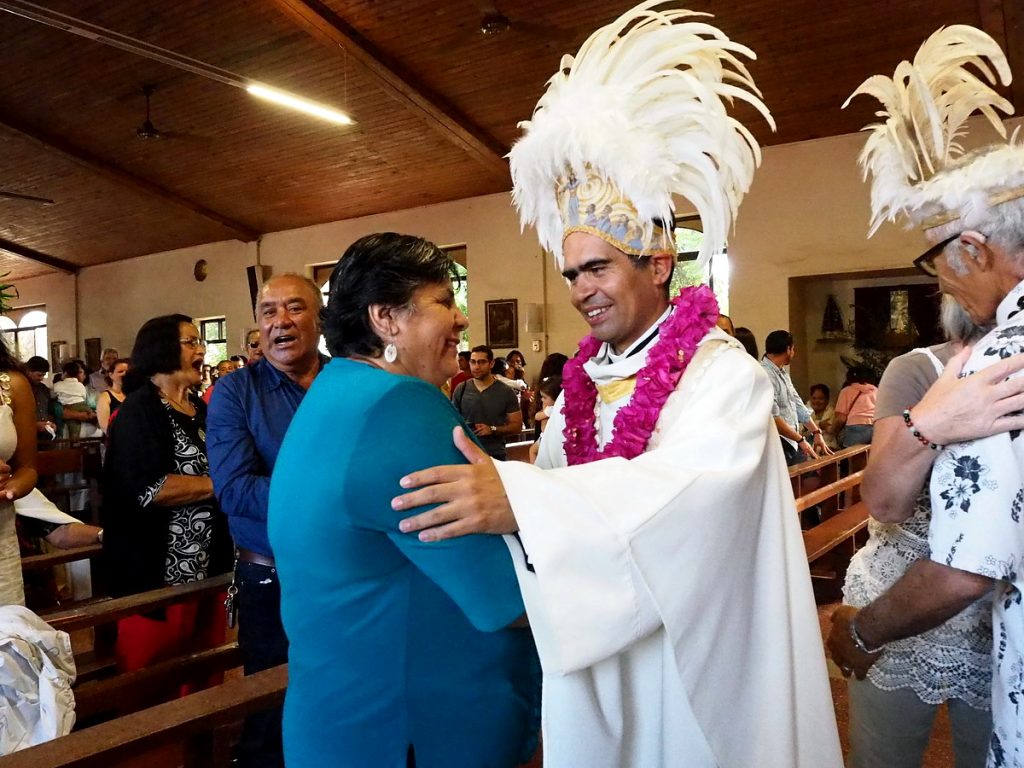
I woke from the surprise just in time for the next unexpected turn: the band started playing and the worshippers started singing happily. The lyrics of the songs were written in the local language and projected onto a canvas placed next to the statue of the crucified Jesus.
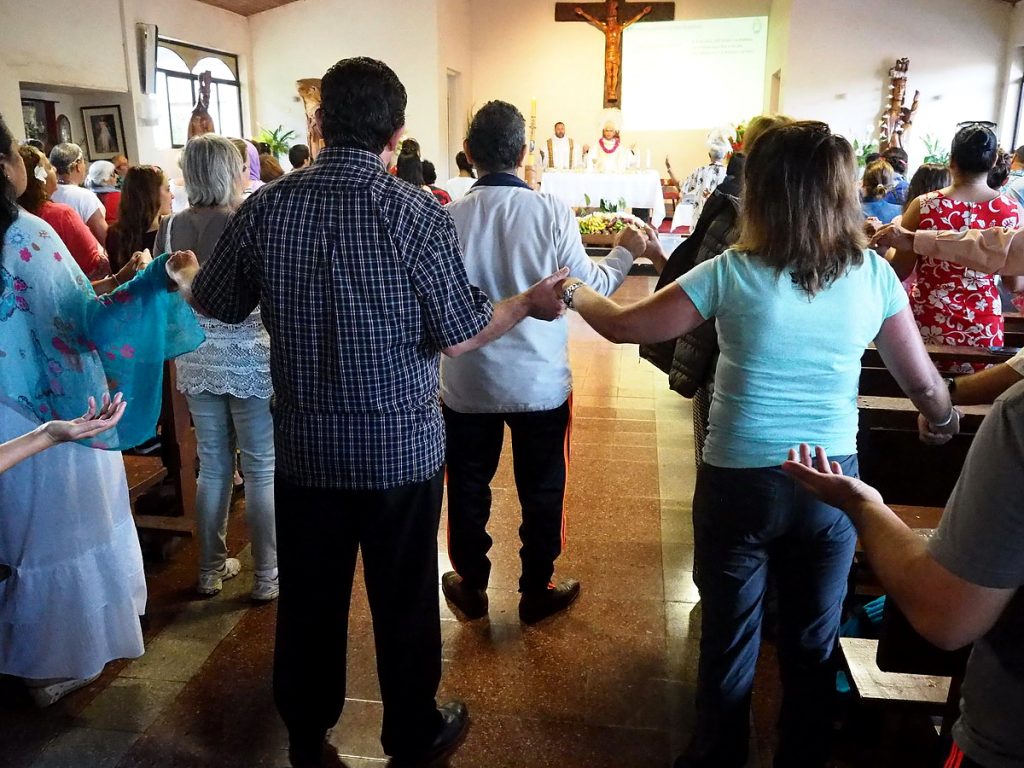
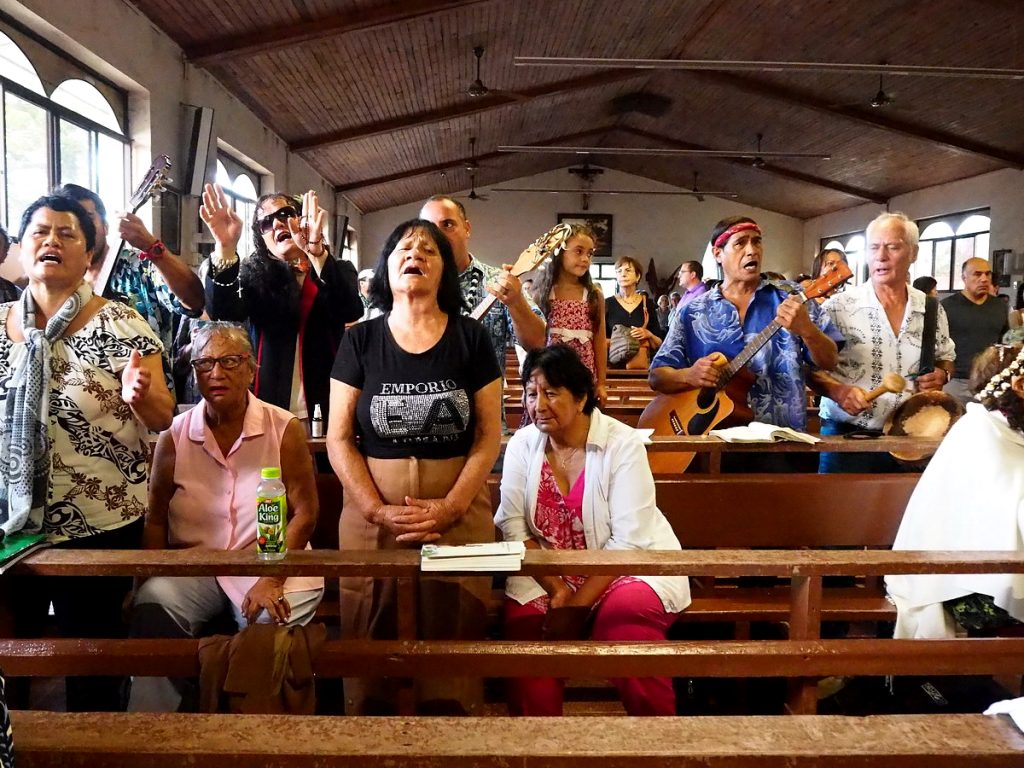
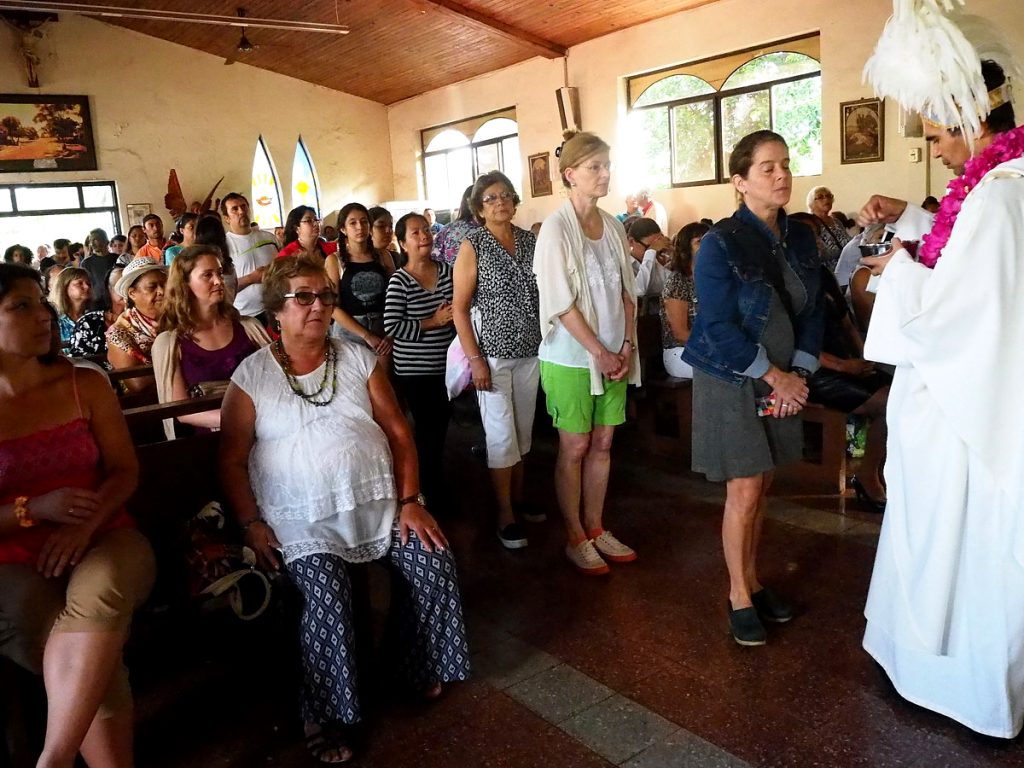

During the hour long mass, the Chilean priest preached mainly in Spanish, sometimes in Latin, but much shorter than what we are used to in Europe. Most of the mass was taken up by songs sung in the Rapa Nui and the Tahitian language, with the melody and rhythm provided by three guitarists. A familiar feature was the offering of altar-bread and wine; however the huge fruit basket set up before the altar was a surprising decoration, as was the stoop made of shells.
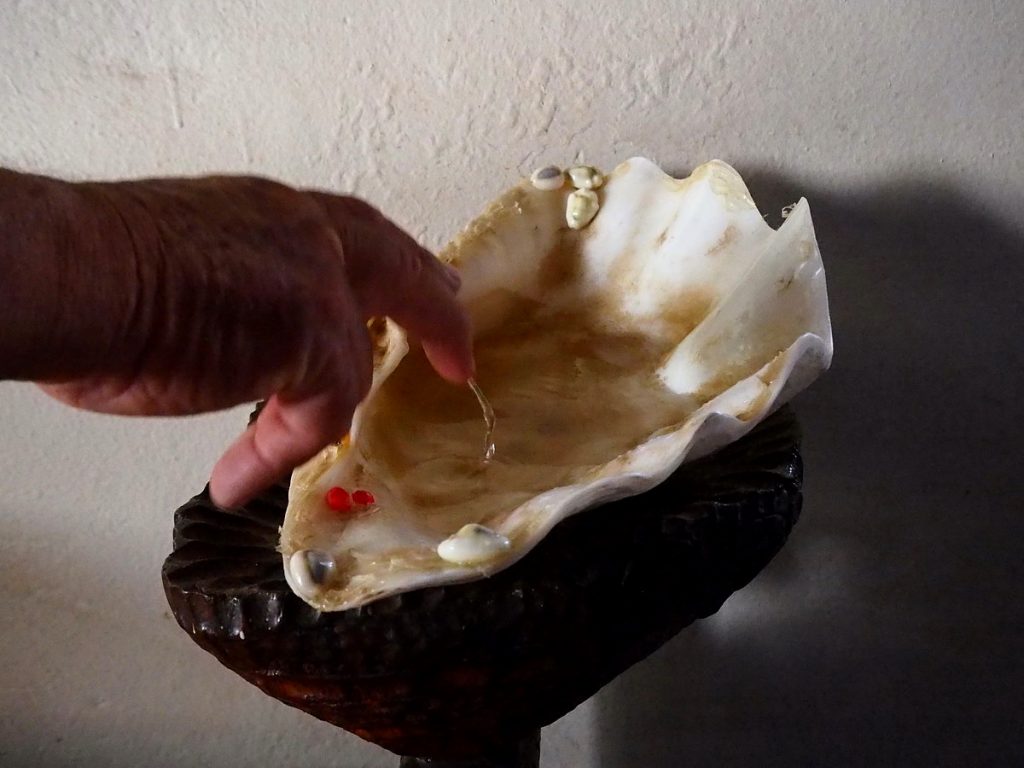
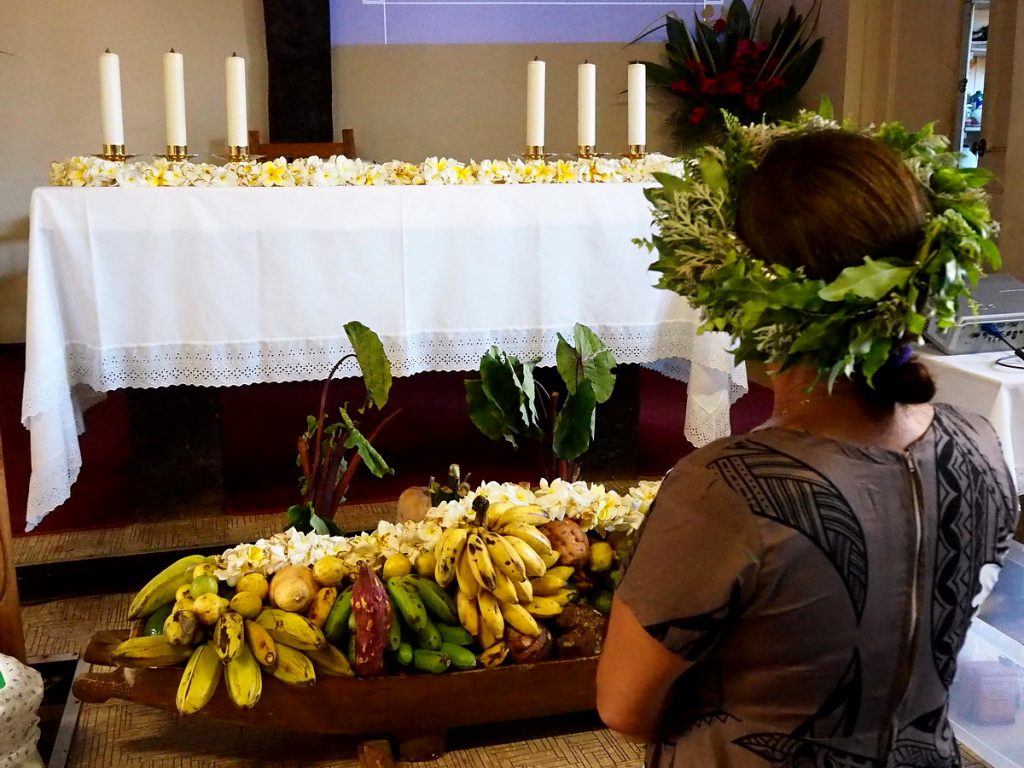
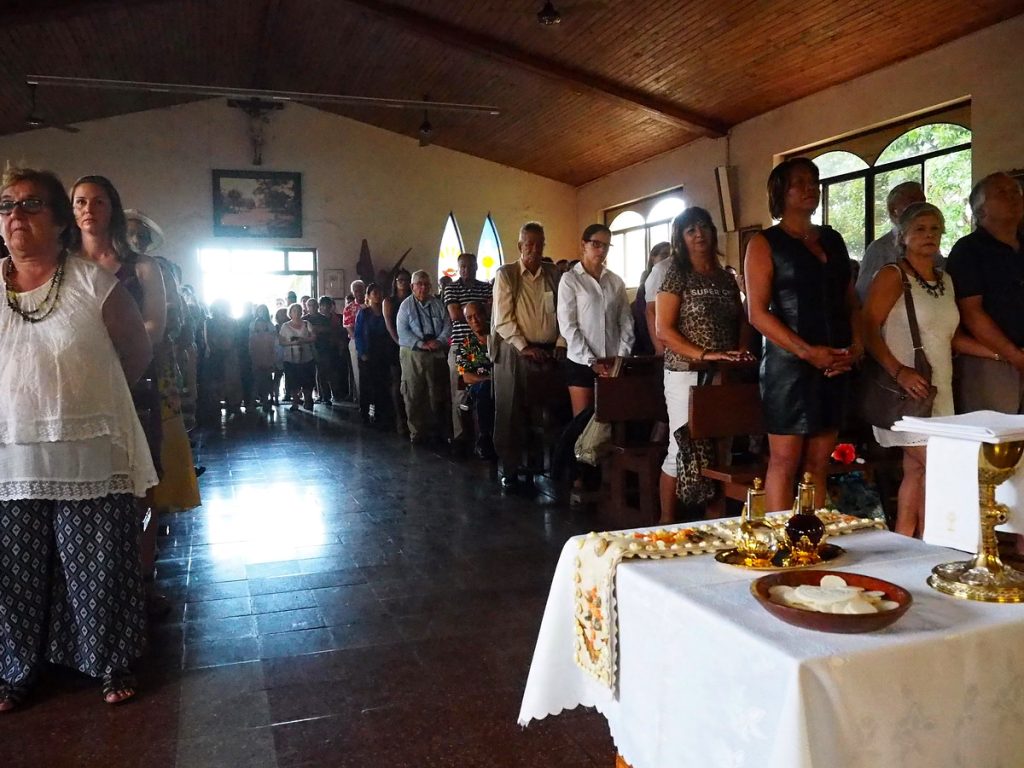
But the celebrations did not end with mass! At noon the young and the old living here gathered in a street. The unending but patiently waiting line of people stood in front of the entrance of a huge garden. Food had been cooking for hours in a pit, dug in the ground of a place that was the size of almost half a soccer field, as was prevalent worldwide from Chile to New-Zealand centuries ago.
Lava stones heated in open fire are placed in the pit and then covered with banana leaves. The food they want to cook (sweet potatoes, pork meat, yam) is placed on these. Next comes another layer of banana leaves, then wet jute and finally the whole heap is covered with earth.
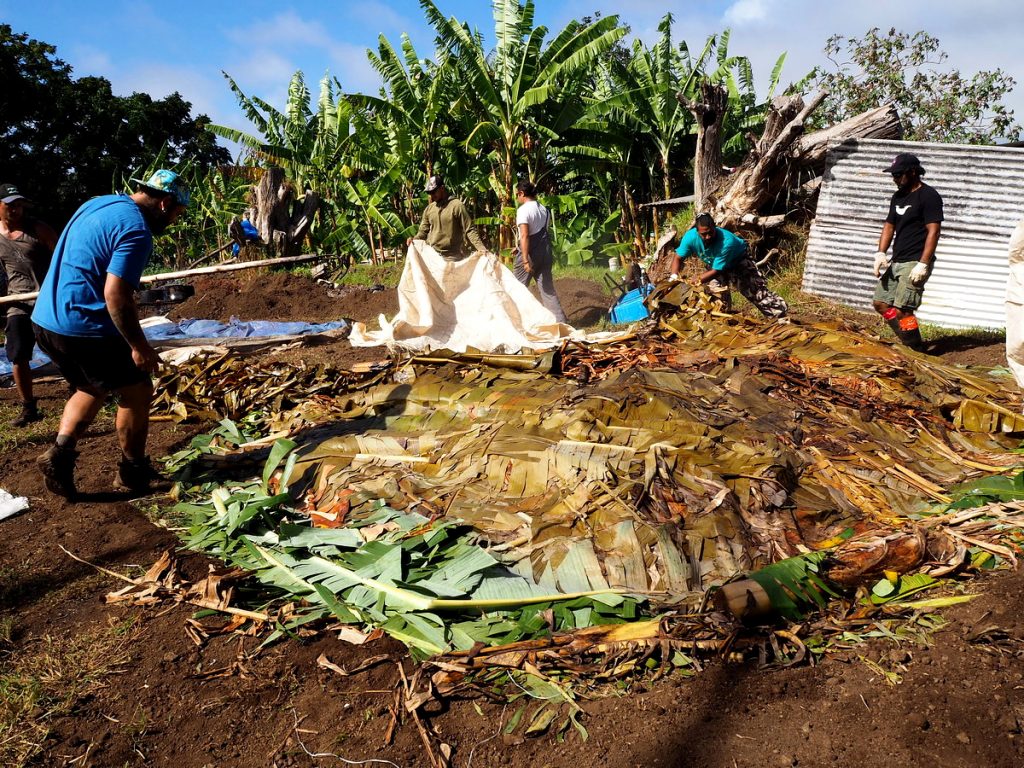
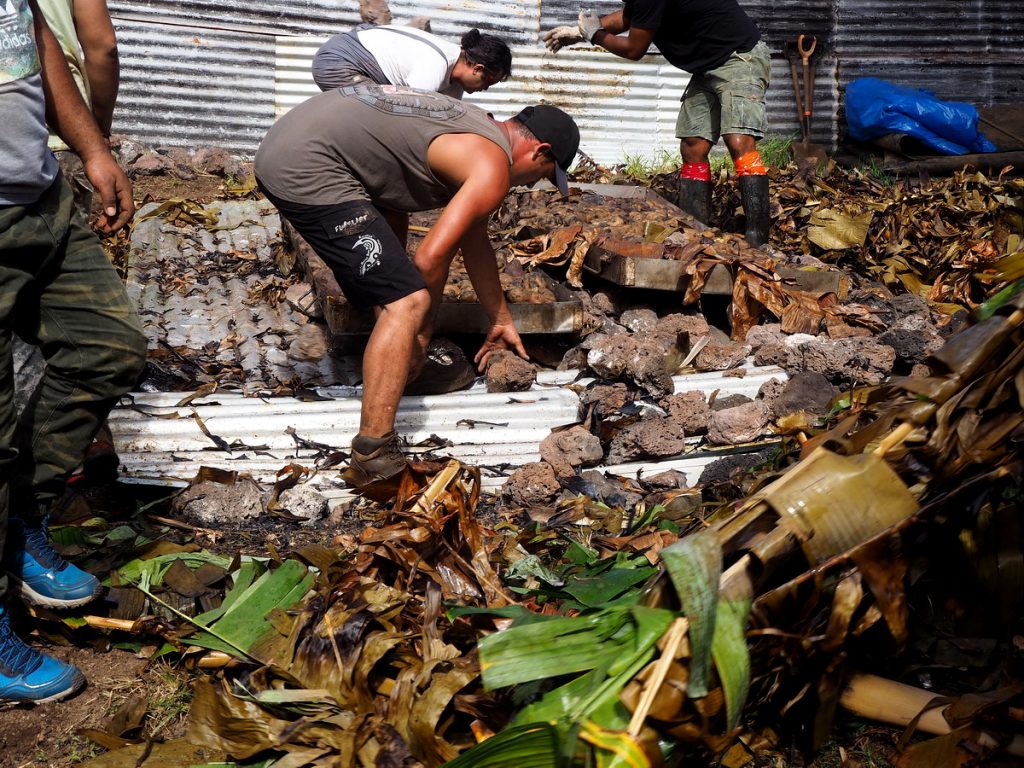
Before the food being prepared in the huge pans was uncovered, the priest walked over from the church and blessed the lunch. Soon the guitarists arrived too and the ancient songs were intoned once again.
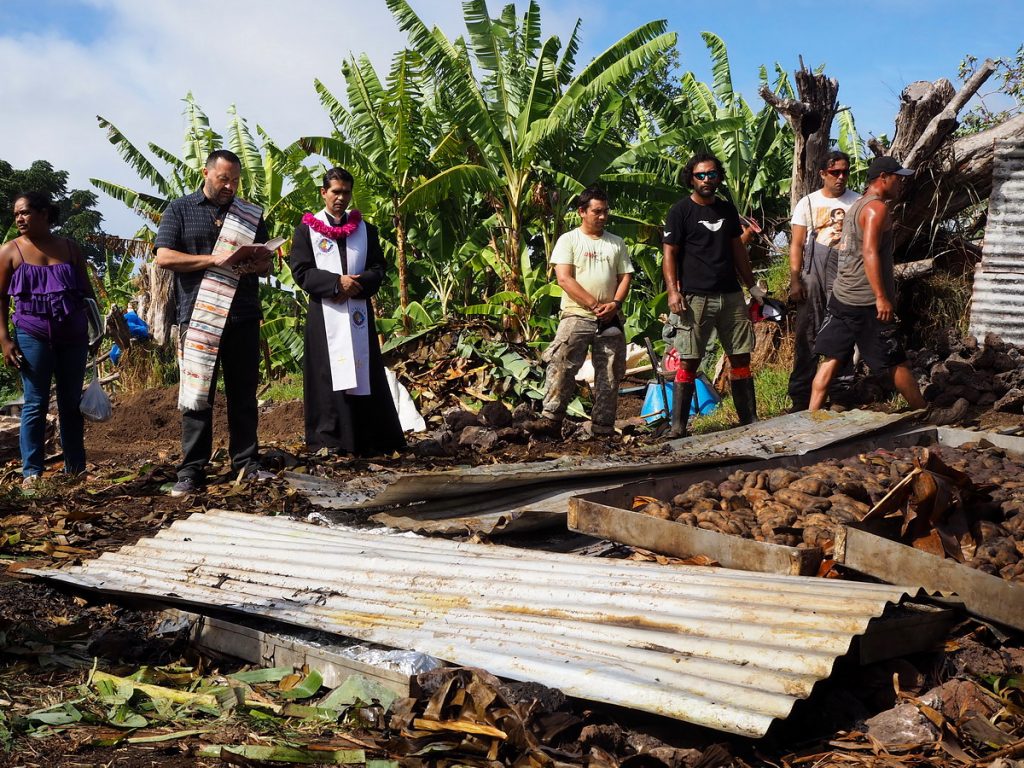

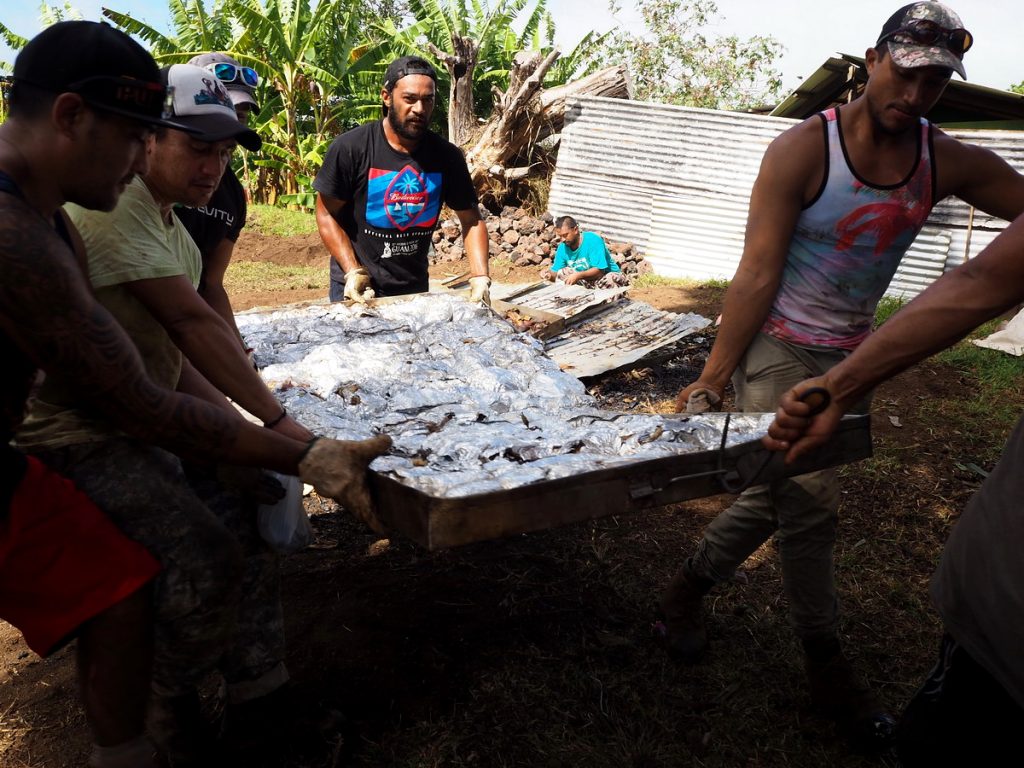
The islanders arrived with big pots, plastic bags and received huge portions of the unearthed treats. Most people headed home, but some had their lunch in the garden, picnic style, in the company of the never tiring band.
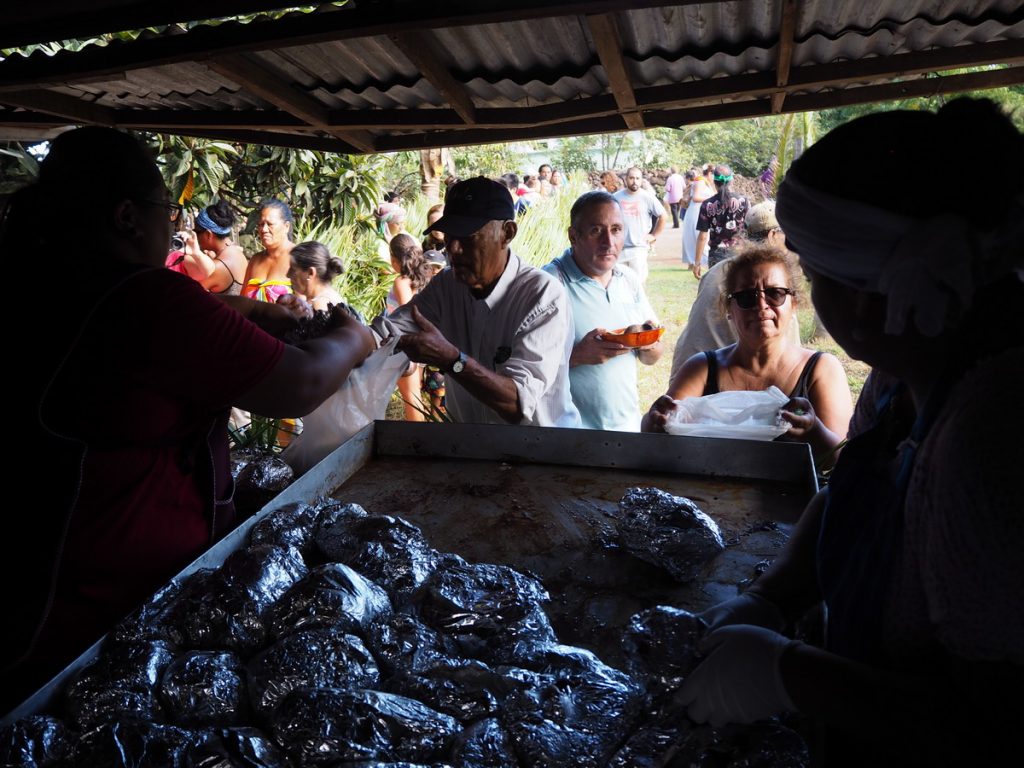
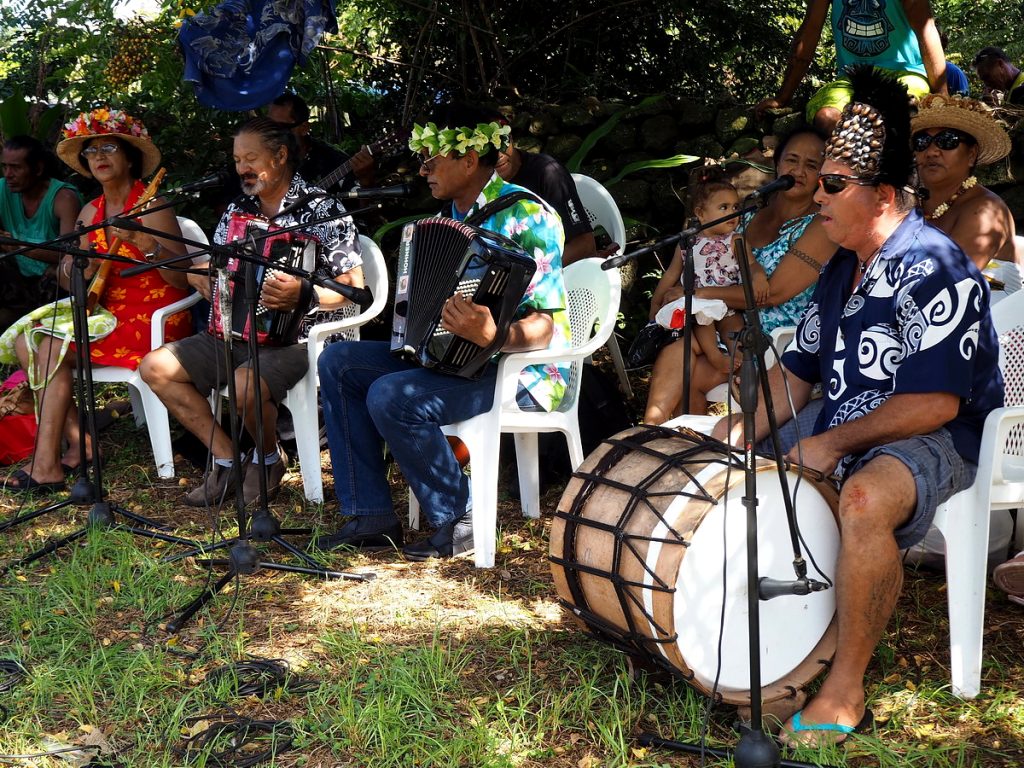
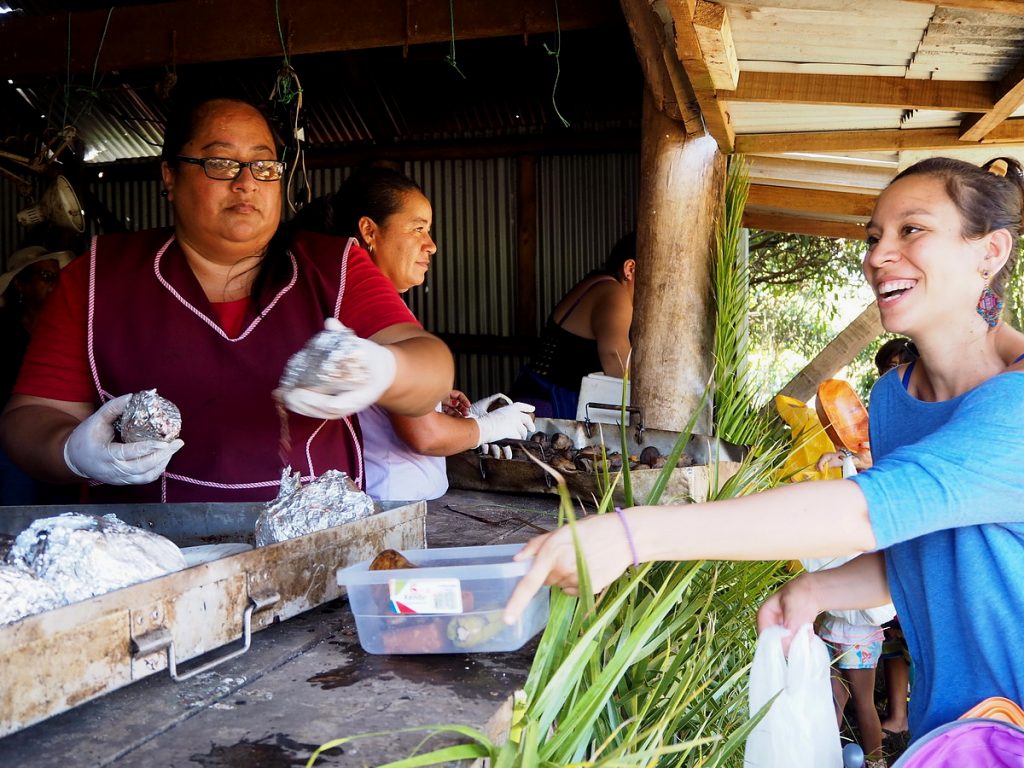
As I enjoyed my meal, I got acquainted with a French girl living here and asked her about this tradition. She told me that this kind of huge feast is organized on larger religious and state holidays. The local municipality covers the costs of the food, whilst the place and manpower is each provided by a local family.
It was proven to me once again that places known for only one iconic sight are much more interesting and complex if one spends enough time to discover them.
But of course it is still the emblematic statues tirelessly carved out of huge stones by the inhabitants of Rapa Nui over decades, that draw visitors here. These all represent an ancestor and are placed with their backs to the beach, facing the villages according to the beliefs of the natives they protect them and provide for their prosperity. Though this ancient civilization was overthrown by internal wars, foreign attacks and natural disasters, the statues did reach their goal: they provide a means of living for the people living on the island. The 5800 inhabitants of the island serve 100,000 tourists a year and most of the income comes from these visitors.
No matter how many times I have seen the statues on photos, I was – just like the other visitors – awestruck by them too. They are fascinating by themselves, but the secrets surrounding their creation and transportation make them even more mystical. During the week I spent here I visited the island thoroughly, visiting the main sculptures more than once. During my visit I was so overcome by the magic of the place that I cannot call it Easter Island any more. Just as Hawaii is not called Sandwich Islands since Captain James Cook, this wonderful, faraway part of the world will forever be Rapa Nui for me.
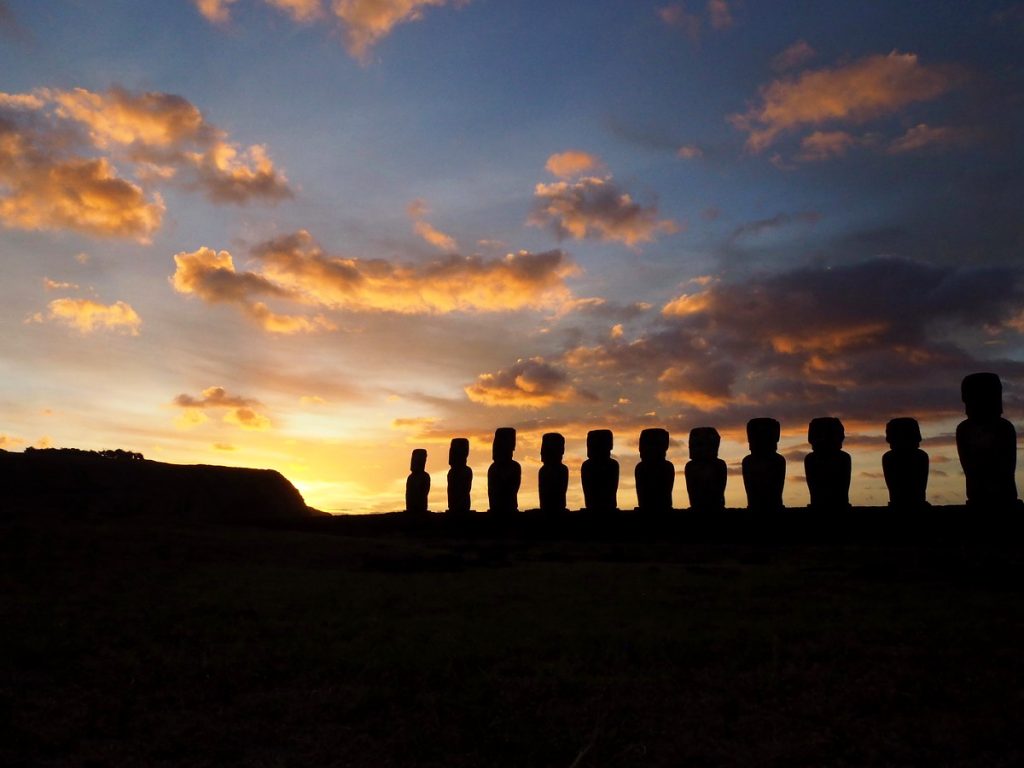
This post was originally published in Hungarian in National Geographic.

